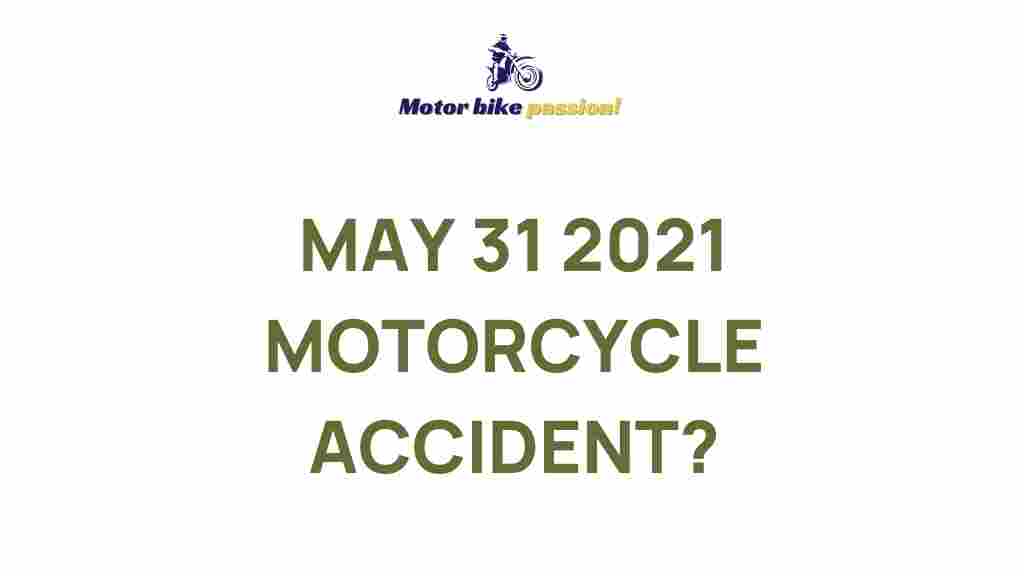Riding a motorcycle is exhilarating, but it comes with its own set of risks. Understanding *motorcycle safety* is crucial to ensuring that every journey you take is as secure as it is thrilling. From selecting the right gear to adopting defensive riding techniques, mastering motorcycle safety can make a significant difference in reducing accidents and enhancing your overall riding experience.
Motorcycle Safety: A Comprehensive Overview
Motorcycle safety encompasses all the practices, gear, and strategies designed to protect riders from accidents, injuries, and fatalities. With motorcycles offering less protection than cars, it’s essential for riders to take proactive measures. Below, we break down key areas to focus on for optimal safety.
Step 1: Choose the Right Gear
Proper motorcycle gear is the first line of defense for riders. Here’s what you need to prioritize:
- Helmet: A DOT-certified helmet significantly reduces the risk of head injuries. Full-face helmets offer the best protection and visibility.
- Jackets and Pants: Opt for materials like leather or textile with built-in armor to safeguard against abrasions.
- Gloves: Reinforced gloves protect your hands from impact and offer better grip.
- Boots: Sturdy, over-the-ankle boots provide stability and shield your feet in case of a fall.
Investing in high-quality gear not only enhances your safety but also boosts your confidence while riding.
Step 2: Maintain Your Motorcycle
Regular maintenance is a cornerstone of motorcycle safety. A well-maintained bike is less likely to fail on the road. Follow these maintenance tips:
- Check tire pressure and tread depth before every ride.
- Inspect brakes for responsiveness and wear.
- Ensure all lights and indicators are functional.
- Change oil and filters as per the manufacturer’s recommendations.
- Keep your chain clean and lubricated for smooth performance.
For detailed maintenance advice, consider referring to your bike’s manual or consulting with a professional mechanic. Learn more about basic motorcycle maintenance.
Step 3: Develop Defensive Riding Skills
Defensive riding is one of the most effective ways to enhance motorcycle safety. These strategies help you anticipate and avoid potential dangers:
- Always assume that other drivers may not see you.
- Maintain a safe following distance to allow time for emergency stops.
- Stay out of blind spots and use your horn if necessary to alert other drivers.
- Be vigilant at intersections, where a significant number of accidents occur.
- Adjust your speed to match road and weather conditions.
Defensive riding is about staying proactive and keeping your focus on the road at all times.
Step 4: Learn to Handle Emergency Situations
No matter how careful you are, emergencies can arise. Being prepared can make all the difference:
- Skid Recovery: If your bike starts to skid, avoid slamming the brakes. Instead, gently ease off the throttle and focus on regaining balance.
- Sudden Stops: Practice progressive braking by applying both front and rear brakes gradually to prevent locking the wheels.
- Obstacle Avoidance: Learn counter-steering techniques to quickly maneuver around unexpected obstacles.
Practice these techniques in a controlled environment to build muscle memory and confidence.
Troubleshooting Common Motorcycle Safety Challenges
Even with precautions, riders may face challenges. Here are solutions to some common problems:
- Visibility Issues: Install reflective strips on your gear and bike. Use daytime running lights and avoid riding in another vehicle’s blind spot.
- Poor Weather Conditions: Reduce speed and avoid sudden maneuvers. Invest in waterproof gear and anti-fog visors.
- Fatigue: Take frequent breaks on long rides. Stay hydrated and well-rested before starting your journey.
- Distracted Riding: Avoid using mobile devices while riding. Use a hands-free communication system for essential calls.
Addressing these challenges proactively ensures a safer riding experience.
Stay Informed and Educated
Enhancing your knowledge is a critical aspect of motorcycle safety. Enroll in advanced rider training courses to improve your skills. Keep up-to-date with local traffic laws and regulations.
For additional information, explore resources from trusted organizations like the Motorcycle Safety Foundation (MSF).
Conclusion
Mastering motorcycle safety is not just about protecting yourself; it’s about fostering a culture of responsibility on the road. By wearing the right gear, maintaining your bike, adopting defensive riding habits, and staying prepared for emergencies, you can significantly reduce risks and enjoy a secure riding experience.
Begin your journey towards safer riding today. Check out our detailed guide on enhancing motorcycle skills for more tips and strategies.
This article is in the category Safe Driving and created by MotorBikePassion Team
